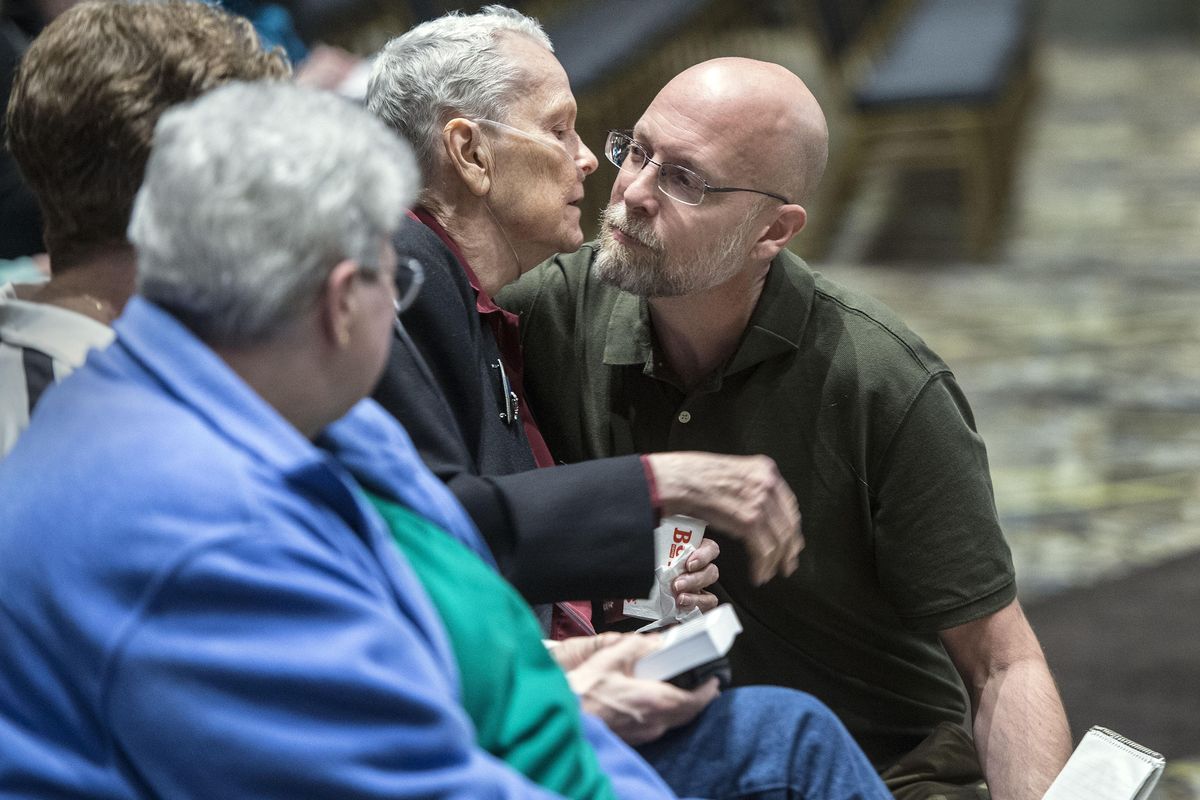Andy Brown’s new book helped him deal the with impact on his life of a long-ago shooting at Fairchild Air Force Base

Twenty two years ago, Fairchild Air Force Base experienced its worst week.
On Monday, June 20, 1994, a mentally distraught gunman killed four people and wounded 22 more at the base’s hospital before being shot and killed in the parking lot. Four days later on Friday, a B-52 bomber carrying four decorated Air Force pilots crashed while preparing for an air show that weekend.
In the weeks, months and years following the two tragedies, news reports and investigations started piecing together information on what happened and why.
The gunman, Dean Mellberg, had recently been discharged from the military; he was deemed unfit for duty due to severe mental health issues. The pilot of the B-52 bomber, Arthur “Bud” Holland, was known as an overly aggressive pilot. Holland’s co-pilot on the flight, Mark McGeehan, even recommended Holland be removed from flying duty before the crash.
Two decades later, many of the victims or people affected by the tragedies have tried to move on, while others are constantly reminded of it. In a short memorial video released by Fairchild, some victims say talking about that day has helped them cope and stave off lasting anxieties.
Andy Brown, the security policeman who shot Mellberg that summer afternoon, decided to write a book.
Seven years later, he’s ready for the world to read it.
“I just wish it hadn’t taken so long to complete,” Brown said. “But I did enjoy the process.”
“Warnings Unheeded” is a 378-page, nonfiction chronicle of the pair of tragedies that happened that week and the set of circumstances that led to them. Brown said the linkage between the two tragedies is that they could have – and should have – been avoided.
“People had predicted both of the incidents and tried to warn their superiors,” Brown said. “Those warnings went unheeded – the people who were predicting tragedy pretty much got shot down.”
In the years following the shooting and crash, Brown struggled with undiagnosed post-traumatic stress disorder. He became anxious around large crowds and was always hyper-alert while in public. In 1999, he was officially diagnosed by a base psychologist. He requested a medical discharge shortly after.
For years, he continued therapy as he struggled with the images, sounds and smells of that day constantly creeping into his mind.
In 2009, he decided to start researching the shooting as a way of wrapping his mind around the incident. He repeatedly confronted the details of that day as a way to cope, learning new pieces of information as he went along.
“It ended up not affecting me as much as I wanted,” Brown said.
Around that time, progress on the book was slow; it was difficult to work on it without slipping into an unhealthy state of mind. It mostly stayed that way until 2012, when Brown received prolonged exposure therapy – therapy that’s been proven effective in treating PTSD. It works by having someone gradually approach trauma-related memories, feelings and situations that they would previously avoid.
Before the prolonged exposure therapy, Brown would think about that Monday in the parking lot every hour. Then, slowly, it was every day.
Now, it’s only when he wants to.
“It’s not an intrusive thought anymore,” he said. “Avoidance is not a good thing when dealing with this.”
The book is being published by a company Brown created, called WU Press. Brown also hired a few editors to read through it, and before the book officially launched Saturday, he sent a few copies around for review.
For his would-be readers, Brown hopes there’s a lesson to be learned: Don’t let this happen in the future. Because even if it does, he says he’s not going to be the one to write about it.
“I hope nothing else happens to me that’s worthy of writing a book,” he said jokingly. “So I can spend some time with my family and maybe get some sleep.”